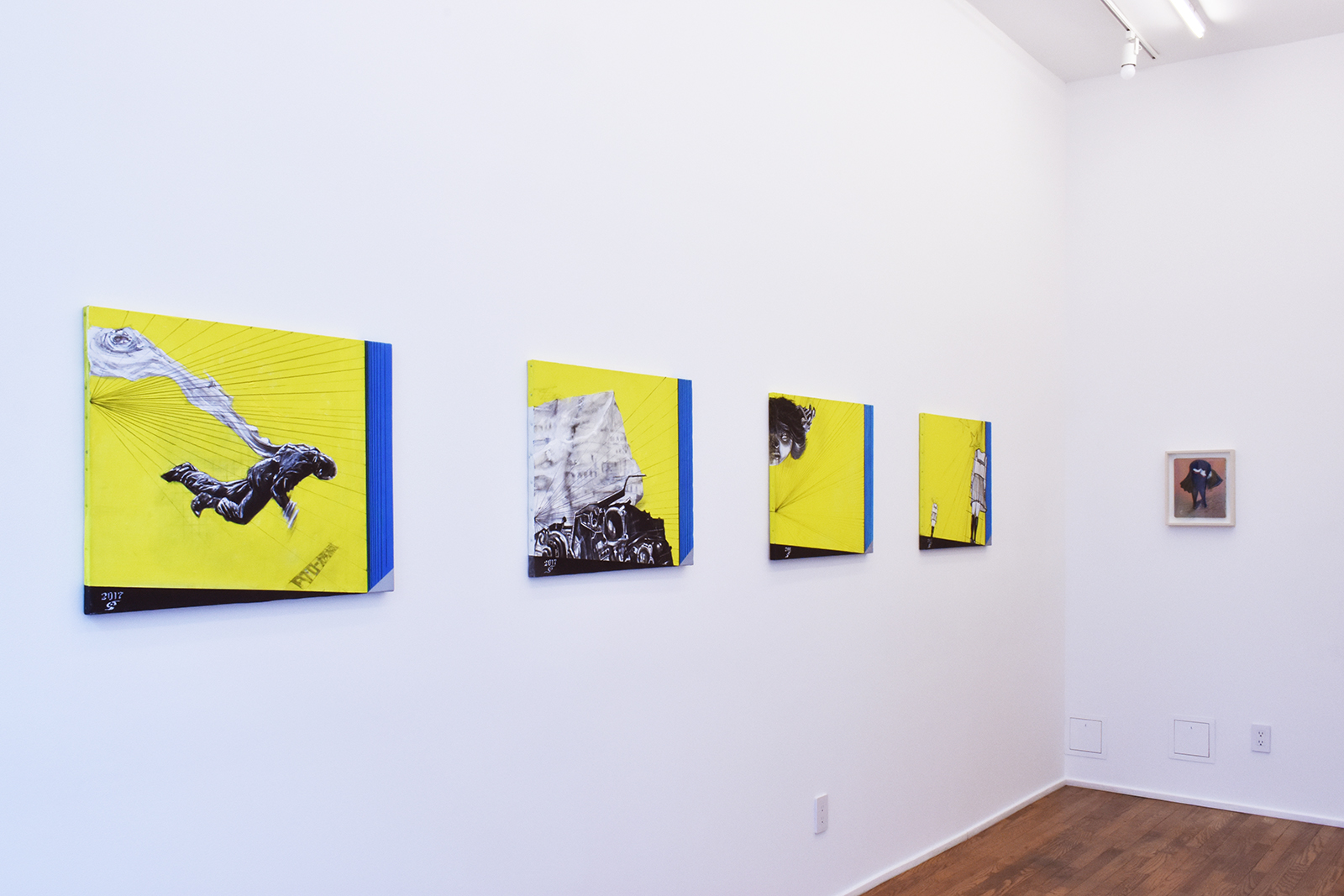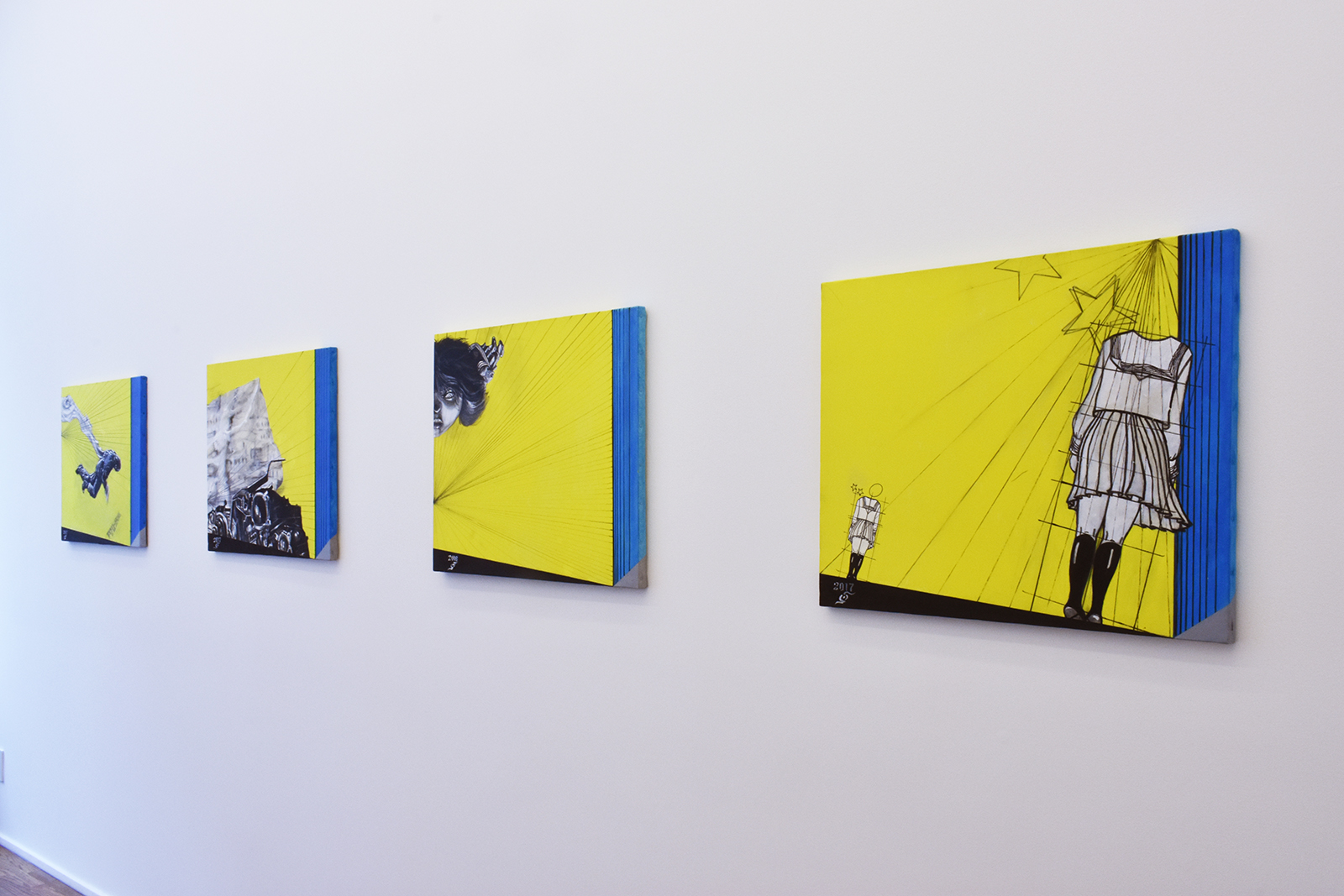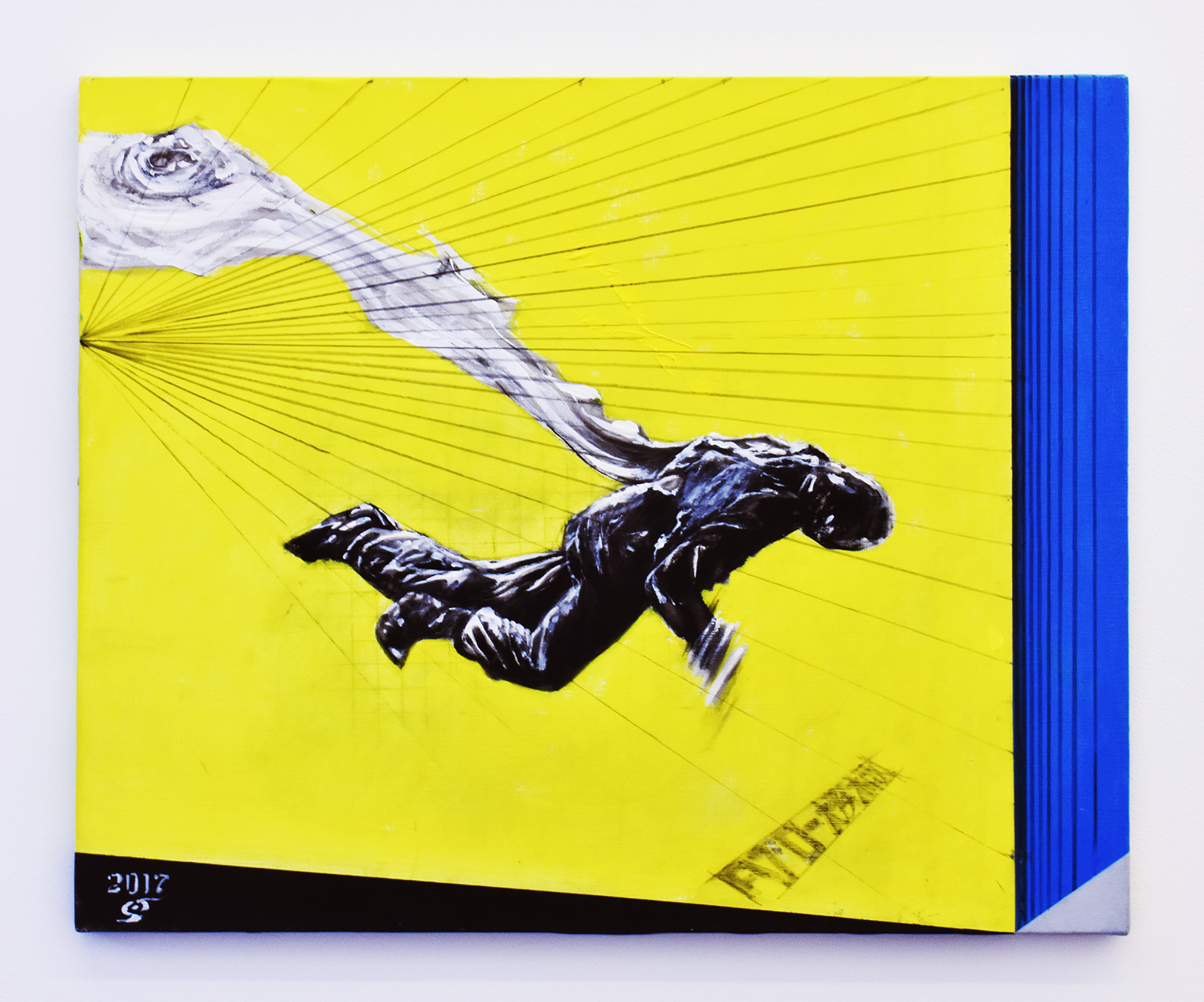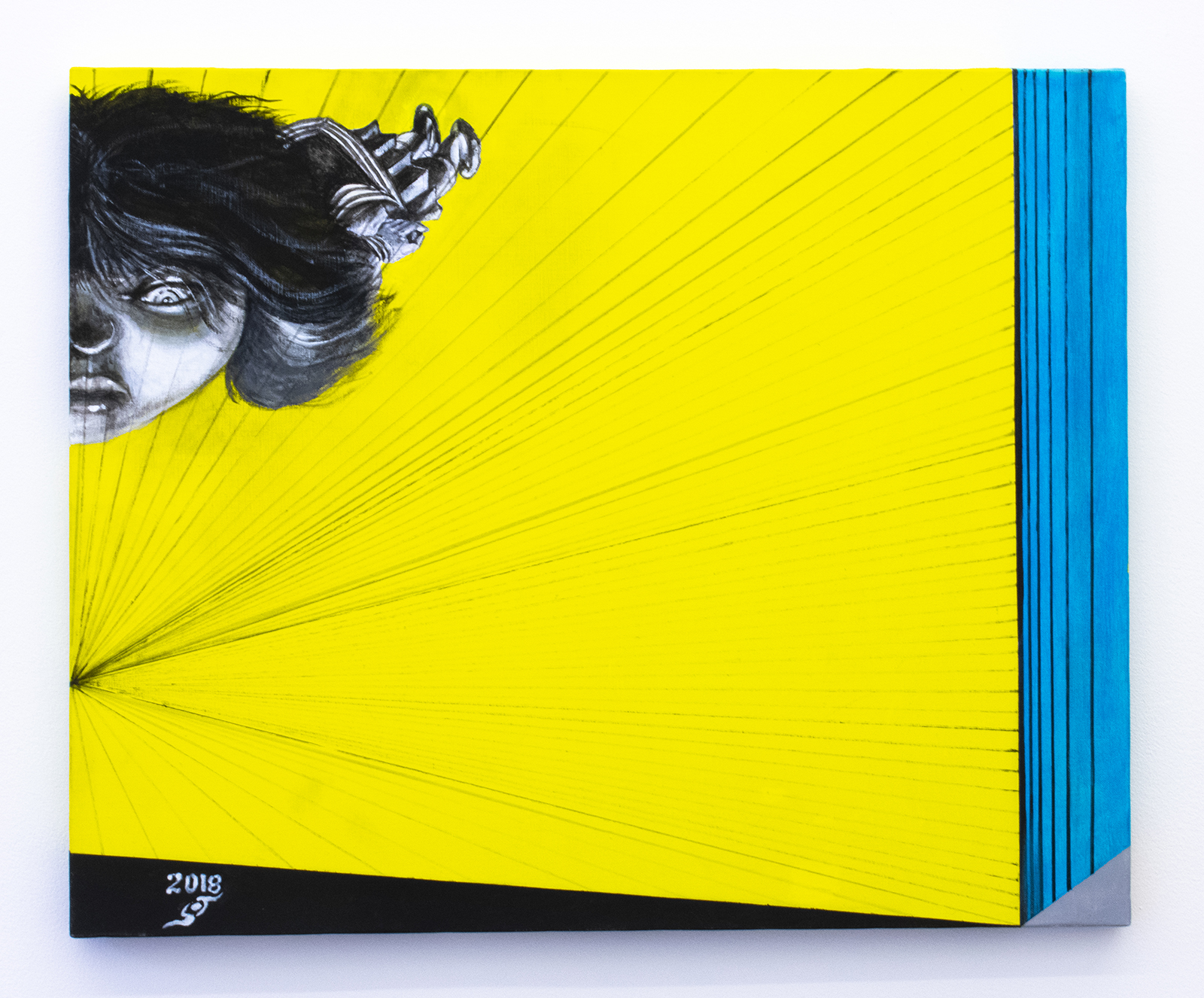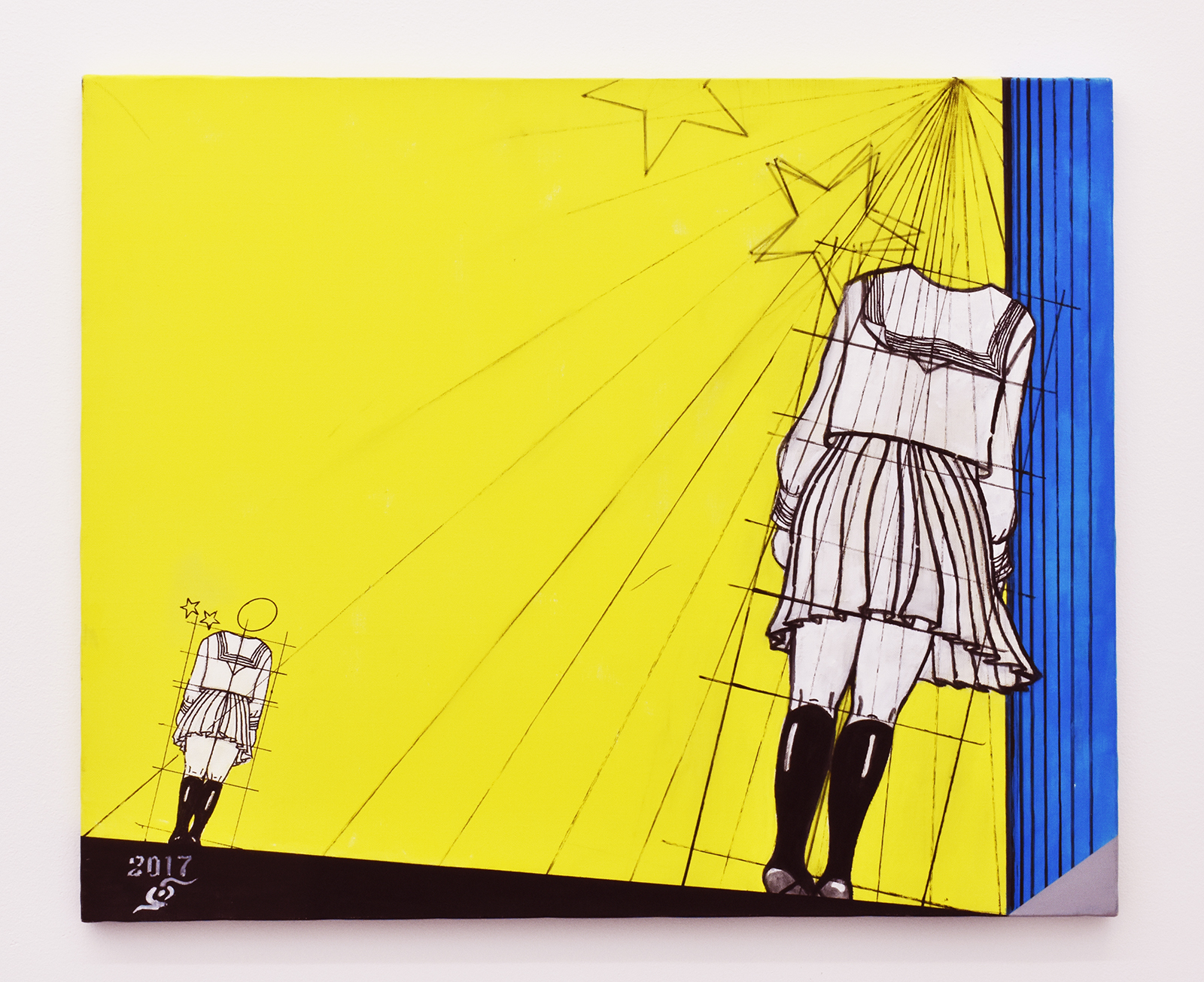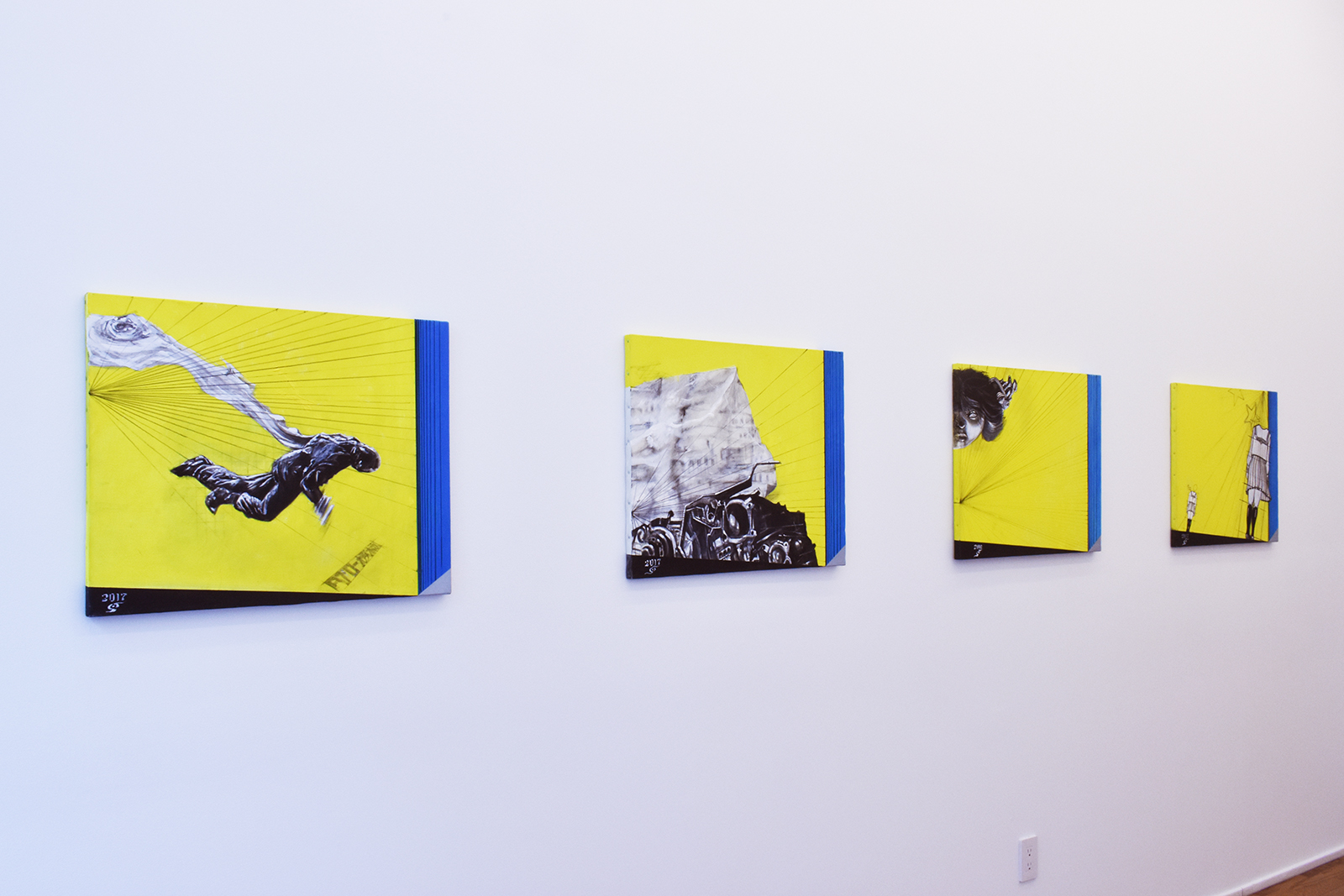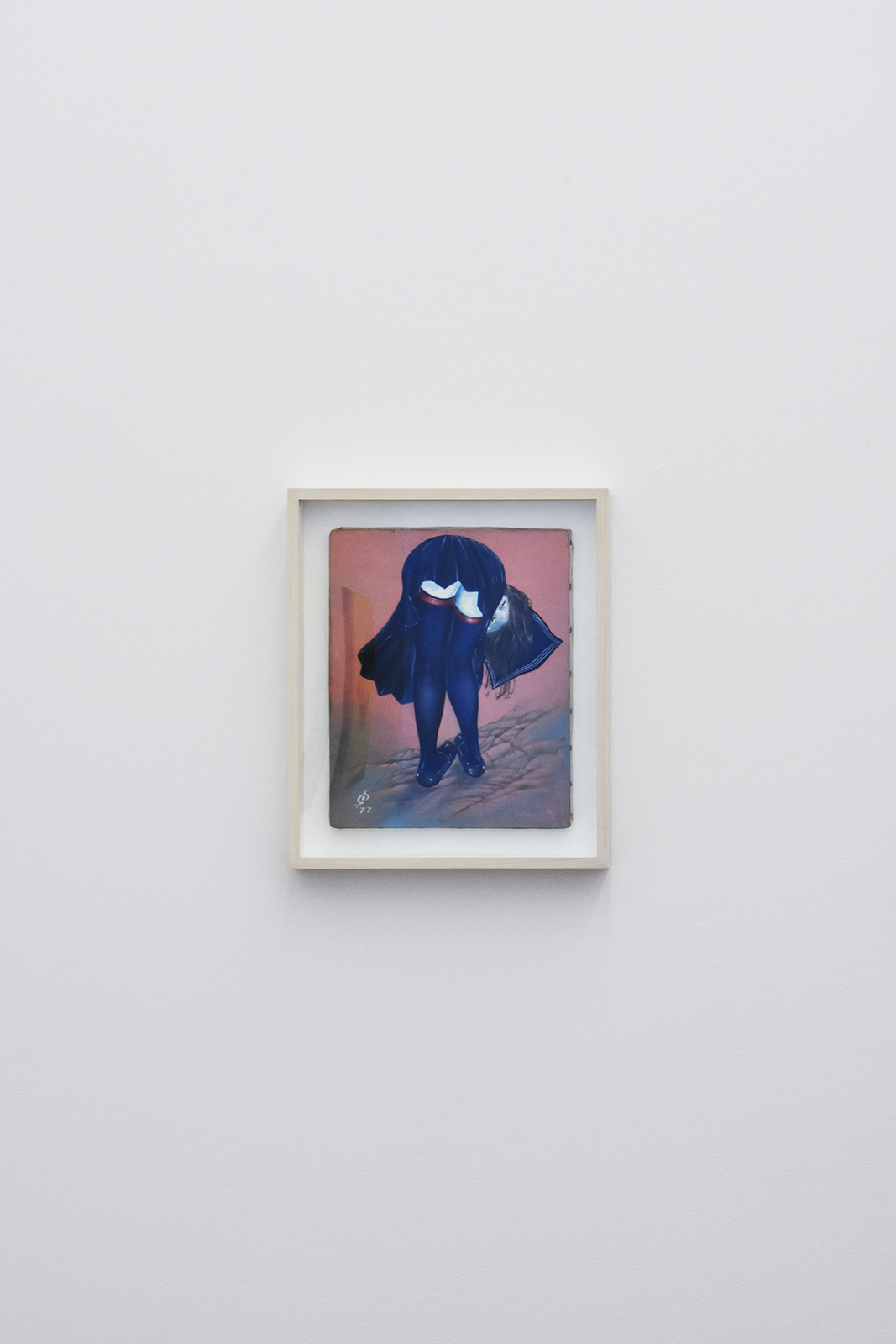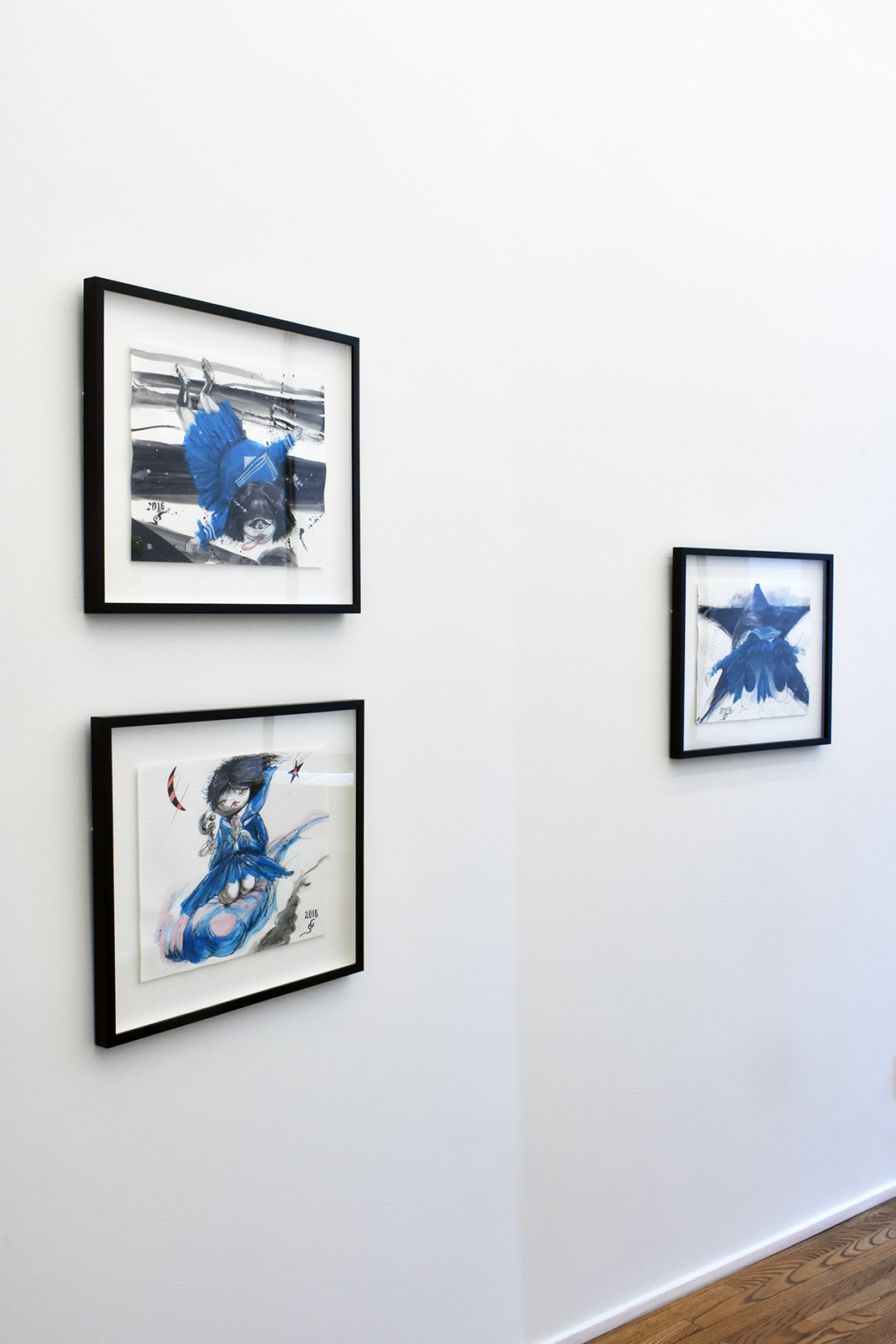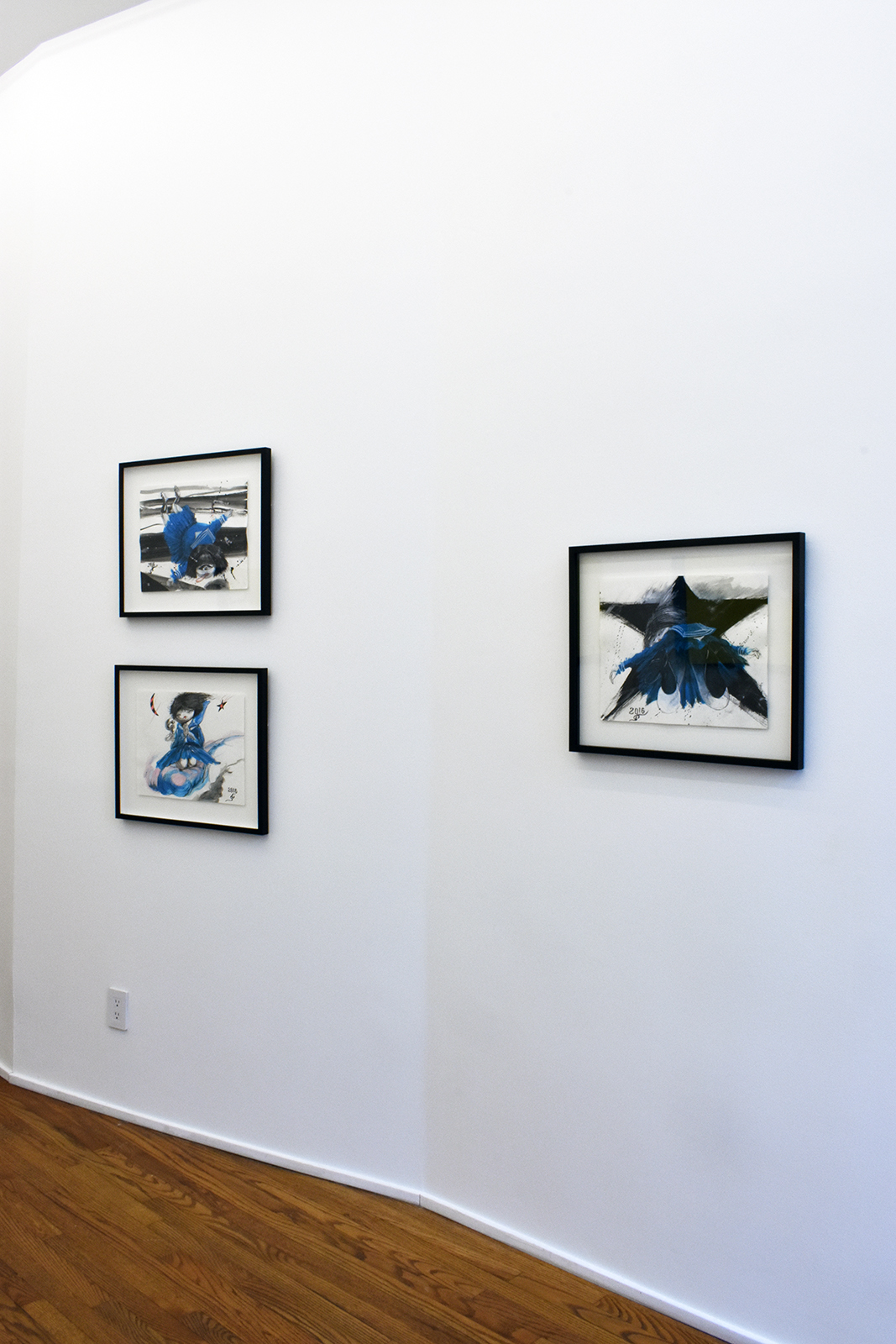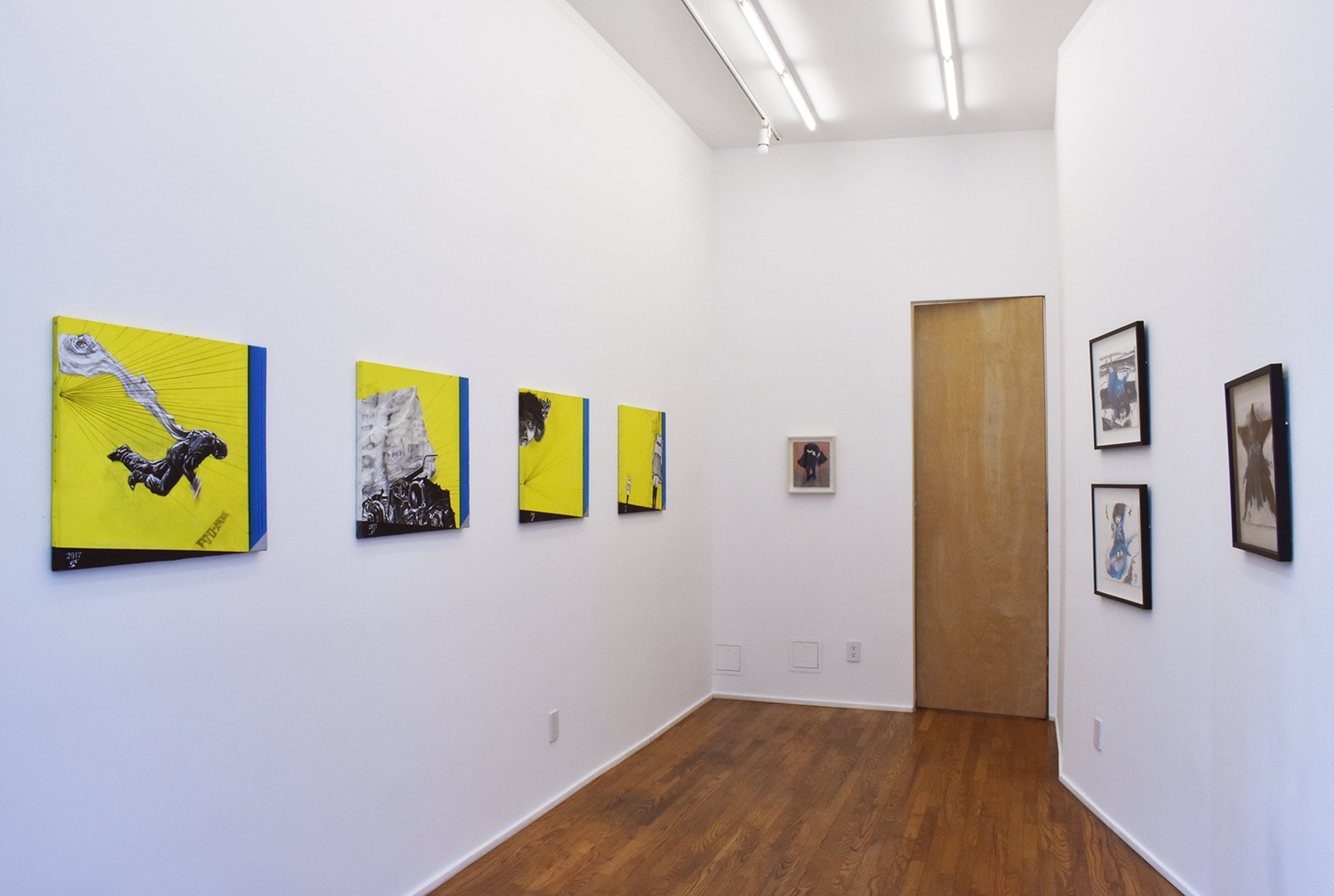Hiroshi Nakamura, Value and Depth 7, 2018.
Acrylic on Canvas, 20 7/8 x 25 5/8 inches / 53.0 x 65.2 cm
The front gallery:
Hiroshi Nakamura
Value and Depth
March 8–April 6, 2019
In conjunction with Japan Society’s Radicalism in the Wilderness: Japanese Artists in the Global 1960s, Ulterior Gallery is pleased to present two solo presentations of works by two artists who are leading figures in the Japanese art world of that era. The front gallery will feature the first U.S. solo exhibition of recent paintings and drawings by Hiroshi Nakamura. The exhibition will open on March 8 and will be on view until April 6; an opening reception will be held on Saturday, March 9 from 6 to 8 pm.
Hiroshi Nakamura (1932–) has been known for his surrealist style and politically engaged figurative paintings for six decades. In the 1950s, to document the political condition of postwar Japan, he exhibited raw, confrontational “reportage” paintings, which established him as one of the most critically important artists in Japanese art history. In the years since, Nakamura has developed his own philosophy of painting and become one of the foremost figures working in the surrealist tradition. His work was introduced to an international audience through exhibitions such as Reconstructions: Avant-Garde Art in Japan 1945–1965 at the Museum of Modern Art, Oxford, U.K. (1985); Japon des avant gardes 1910–1970, Centre Pompidou, Paris, France (1986); and Tokyo 1955–1970: A New Avant-Garde at the Museum of Modern Museum, New York (2012–13).
In recent years, Nakamura has further honed his ideas about painting and especially painting technique, focusing on ways to erase conventional signs of its presence in completed works. In the group of recent paintings that will be on view at Ulterior, Value and Depth, he plays with perspective and color value, working with and transforming to his own ends the ideas and traditions of trompe l’oeil painting–an illusionistic art technique much prized by the surrealists. In these paintings, Nakamura uses blue and yellow as opposing colors to enhance a sense of optical illusion— so as to “feel the angle with your eyes,” as the artist puts it.
Nakamura’s most famous icons—junior high school girls in school uniforms—began to appear in his paintings in the 1960s. Nakamura originally considered this character as androgynous, with the sailor uniform symbolizing the masculine and the schoolgirl skirt representing the feminine. For Nakamura, the uniform is associated with regulation, control, and the institutional power of military and pedagogical regimes. In his recent drawings, Nakamura’s girl figure is acting up and acting out. For Nakamura, freedom operates most potently in opposition to restriction and oppression.
Hiroshi Nakamura was born in Shizuoka in 1932 and enrolled in the Nihon University Art Department in 1951, as Japan was still struggling through the aftermath of WWII. In 1953, he collaborated with other artists such as Kikuji Yamashita and Tatuso Ikeda to establish Nihon Seinen Bijutsuka Rengo (Sei-bi-ren), and also began exhibiting at the First Annual Nihon Exhibition and the Seventh Annual Exhibition (1954), both at Tokyo Metropolitan Museum in Tokyo. He has been actively exhibiting since then. Nakamura’s works are in numerous museum collections including: National Museum of Modern Art, Tokyo, Japan; the National Museum of Art, Osaka, Japan; Museum of Contemporary Art, Tokyo, Japan; Nerima Art Museum, Tokyo, Japan; Itabashi Art Museum, Tokyo, Japan; Hamamatsu Municipal Museum of Art, Shizuoka, Japan; Takamatsu Municipal Museum, Kagawa, Japan; and Yokohama Museum of Art, Kanagawa, Japan. Recent museum exhibitions include: Art to be Told: The Eyes of Art Critic Yusuke Nakahara, Kawamura Memorial DIC Museum of Art, Chiba, Japan (2016); Kaiga-sha Hiroshi Nakamura, Hamamatsu Municipal Museum of Art, Shizuoka, Japan (2015, retrospective); Roppongi Crossing 2013: Out of Doubt, Mori Art Museum, Tokyo, Japan (2013); Tokyo 1955–1970: A New Avant-Garde, the Museum of Modern Museum, New York, NY (2012–13); Tablou Machine: Paintings and Models by Hiroshi Nakamura, Nerima Art Museum, Tokyo, Japan (2010, solo); Hiroshi Nakamura: Zuga Jiken 1953–2007, Museum of Contemporary Art, Tokyo, Japan / Nagoya City Art Museum, Aichi, Japan (2007, retrospective). Nakamura lives and works in Tokyo, Japan.

